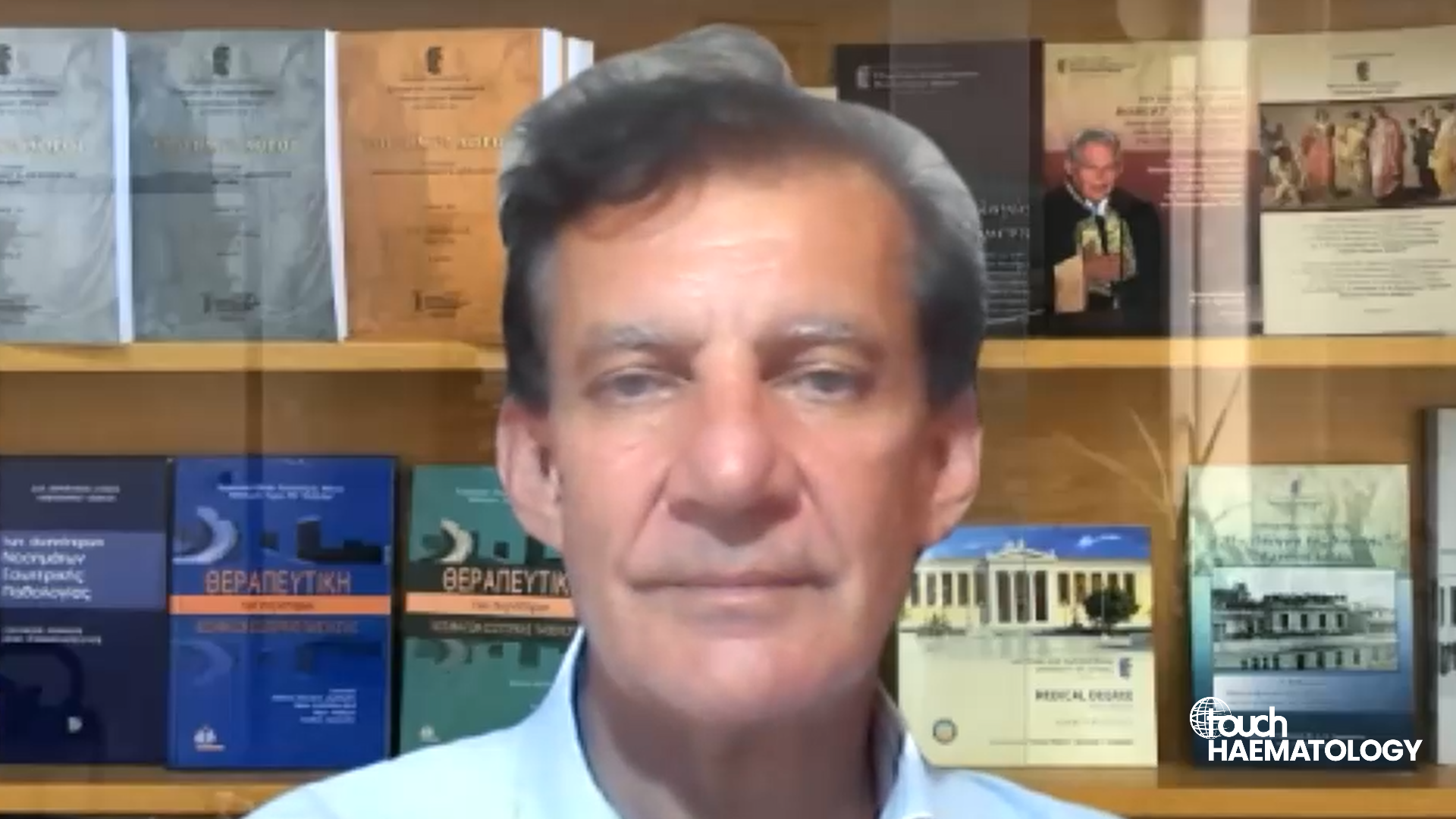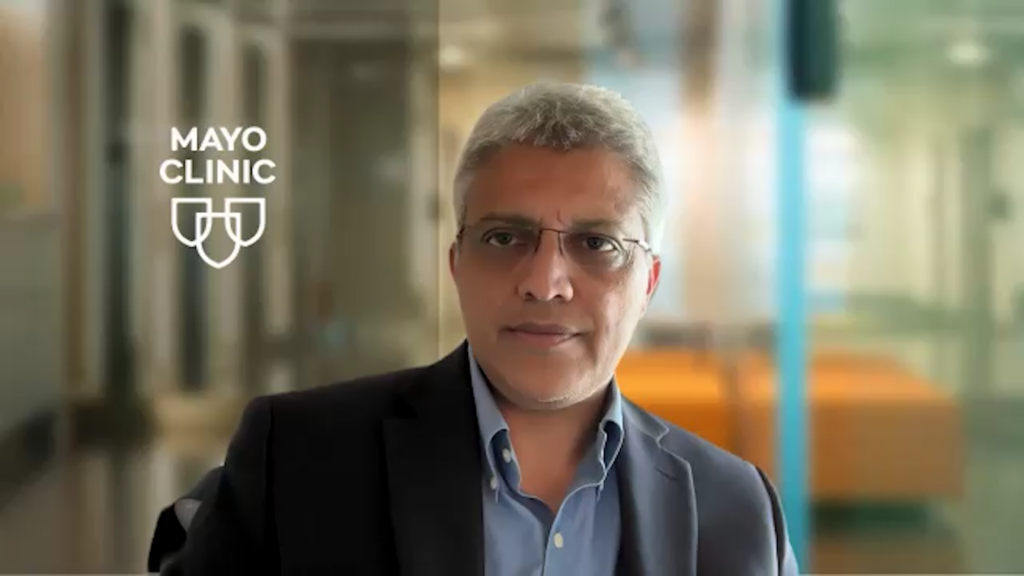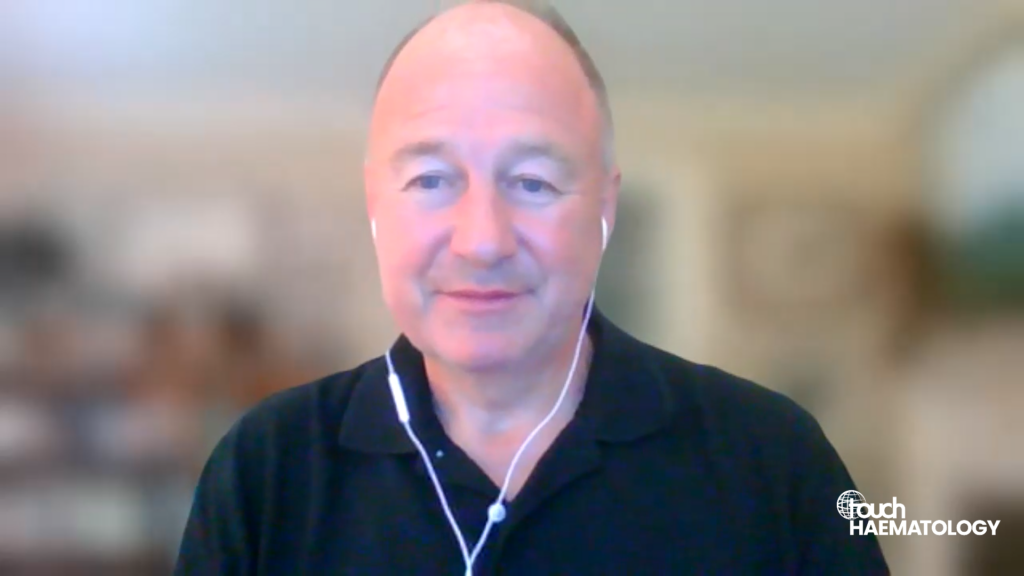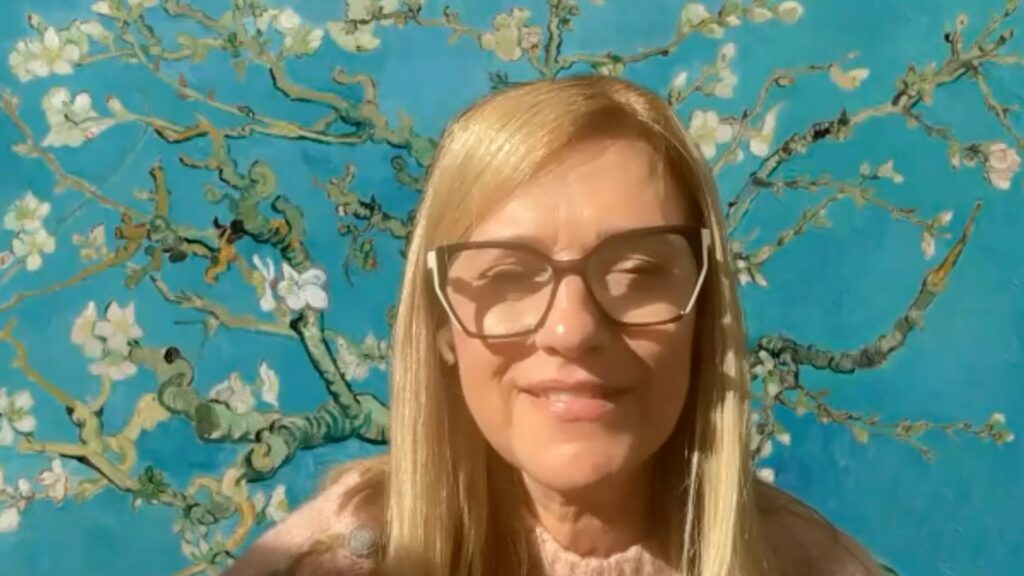Extramedullary disease (EMD) is an aggressive and difficult-to-treat manifestation of multiple myeloma, characterized by malignant plasma cells spreading beyond the bone marrow. At EHA2025, Dr Shaji Kumar (Division of Hematology, Mayo Clinic, Rochester, Minnesota, USA) shared promising results from the late-breaking phase II REDIRECTT-1 trial evaluating the bispecific antibody combination of teclistamab and talquetamab in patients with relapsed/refractory EMD. With an overall response rate of 80% and more than half of patients achieving complete responses, the combination not only demonstrated efficacy but also maintained a manageable safety profile. Dr Kumar discusses the significance of these findings, their implications for high-risk patients and the potential of trispecific therapies on the horizon.
The late-breaking abstract, ‘PHASE 2 STUDY OF TALQUETAMAB + TECLISTAMAB IN PATIENTS WITH RELAPSED/REFRACTORY MULTIPLE MYELOMA AND EXTRAMEDULLARY DISEASE: REDIRECTT-1’ (LB4001) was presented at the European Hematology Association (EHA) 2025 Congress from June 12-15th in Milan, Italy.
1. Why is extramedullary disease such a challenging subset in myeloma, and what are the current unmet clinical needs? (00:14.00)
2. What was the rationale for combining Talquetamab and Teclistamab in this patient population? (1:45.36)
3. What was the design and methodology of the RedirecTT-1 study? (3:56.23)
4. What do the results so far tell us, and what conclusions can be made? (5:16.71)
5. What might these results mean for future clinical practice, and what are the next steps? (7:33.18)
Transcript
Hi, my name is Dr Shaji Kumar. I’m a consultant in hematology in the Division of Hematology at Mayo Clinic in Rochester, Minnesota.
Q1. Why is extramedullary disease such a challenging subset in myeloma, and what are the current unmet clinical needs?
Extramedullary disease is a really challenging problem in multiple myeloma. These are situations where the malignant plasma cells, instead of being mostly confined to the bone marrow, are also found outside the bone marrow.
Now in patients with significant bone disease, the myeloid vessels can break through the bony cortex and form soft tissue masses around the bone, which is often referred to as parametillary disease. Here, we are talking about disease that is hematogenously spreading from beyond the bone marrow, and these lesions of plasmacytomas are not contiguous to the bone marrow itself.
They represent a state that has a very distinct biology, has very aggressive clinical behavior, and patients with the extramural disease have a poor prognosis whether they are identified at the time of diagnosis or at the time of relapse. And what we are seeing as patients are living longer and longer with myeloma with all the new therapies, is at the time of relapse, increasing numbers of patients are having extramural disease. And, this represents a true challenge in the clinical practice today to deal with these patients.
What we are finding is that while the new therapies do work better than what we conventionally had in the past, these responses are often short lasting, and the disease becomes relapsed and refractory to these therapies in acute fashion.
Q2. What was the rationale for combining talquetamab and teclistamab in this patient population?
Bispecific antibodies represent a new therapeutic paradigm for multiple myeloma. We have seen really nice efficacy with different bispecific antibodies targeted against at least three different antigens right now, and two of them are currently approved and available in the clinic in terms of targets.
Both teclistamab and elranatamab target BCMA, and talquetamab targets GPRC5D. All are currently approved and can be used in the setting of relapsed disease. The RedirectTT-1 study was a phase I study that first explored the combination of teclistamab and talquetamab in patients with the relapsed myeloma.
This trial, the results of which was published in the New England Journal of Medicine early in 2025, showed that the combination of teclistamab and talquetamab is highly effective in patients with relapsed refractory myeloma.
Interestingly, about 20% of patients who are enrolled on the clinical trial also have this true extramural disease as part of their disease manifestation, and those patients actually had a response rate of almost 60% with a quite durable response.
Now, based on that preliminary data, a phase II trial was designed specifically to look at the patients with extramural disease to see if this combination truly represents an improvement over the currently available therapy.
And from a biological perspective, we believe that these patients with extramural disease or plasmid leukemia and other high risk manifestations often have a genetically quite complex disease, and they have the ability to escape therapy because of this total heterogeneity, in a much more rapid fashion.
By targeting two different antigens, we believe that we have better control and better eradication of the clones that are present within the extramural disease. And by giving this therapy on a continuous basis, we are able to control the disease longer term as well.
Q3. What was the design and methodology of the RedirecTT-1 study?
Based on the preliminary results, on the extramural disease, we designed a standalone trial for patients with extramural disease within the context of the redirect trial. So this phase II cohort enrolled patients with extramural disease who had at least one lesion that was 2cm or more, that was non-contiguous to the bone marrow, so two extramural disease. These patients had to have relapsed refractory disease and should have intruded class exposed. And importantly, the trial mandated that the response to therapy is assessed using imaging studies, especially PET scan or MRI.
So 90 patients were enrolled on this clinical trial, and these patients were treated with a combination of teclistamab and talquetamab, given every other week. All patients had a 3-step of dosing before they got the full dose. After four cycles, if patients were in a very good partial response, they could go to monthly therapy. Or after six cycles, everybody could switch to a monthly treatment.
The primary endpoint for the trial was overall response rate, again, measured very strictly using the The International Myeloma Working Group (IMWG) consensus criteria with the incorporation of uniform, PET, CT or MRI as imaging modalities.
Q4. What do the results so far tell us, and what conclusions can be made?
The clinical trial demonstrated that the combination of teclistamab and talquetamab is quite effective with an overall response rate of about 80% and about 55% of the patients actually having a complete response.
These responses are translated to progression-free survival, which is about a median of 15 months. The responses are quite durable, and almost 65% of those patients had responses that were ongoing at an estimated 1 year from the start of therapy.
The median overall survival was not reached for this clinical trial. It’s important to think of these response rates in the context of what we would have seen if either of these agents used alone. So if you look at the data from the MajesTEC-1 or MonumenTAL-1 trials, we know that the response rates to teclistamab or talquetamab used alone is about 40–45%, whereas we are seeing an 80%response rate to the combination. The complete response rate for the single agent is about 15-20%, and we are observing about a 55% complete response rate, again, representing a tripling of that.
In addition to these high efficacy, we also noticed that there was no significant worsening of the toxicity. The toxicity profile was quite consistent with either of these, bispecific antibodies used alone. No new toxicities were seen. Hematological toxicity was common. We did see CRRs in about 75% of these patients, ICANS in about 12% of these patients, quite similar to what we saw with the single agent and mostly grade 1 or 2. And this occurred primarily with the step up dosing of the first full dose. We did see infections in about 70% of the patients, but grade 3 or 4 infections was seen in only about 22% of the patients. Overall, the regimens were well tolerated. Even after switching to therapy, very few patients actually relapsed, and most patients actually sustained or improved the depth of response after switching from, the twice week, every two weeks to, once a month.
Q5. What might these results mean for future clinical practice, and what are the next steps?
Overall, these results are quite exciting. You know, this is a very hard to treat patient population with response rates with conventional therapy lasting approximately maybe three months with bispecific antibodies about six months, and with even with CAR T cell therapy about ten to twelve months. And here, we have a median progression free survival of about fifteen months and an overall response rate of eighty percent significantly better than what we have seen in the past, with other therapeutic modalities.
We feel that this data is strong enough for us to consider this combination in clinical practice for patients with high risk disease, particularly those with the extramural disease, and may potentially have a role even in patients with plasma cell leukemia.
We hope that these treatments will become available for our patients fairly soon. And in the future, we might actually replace this with some of the trispecific antibodies that are being developed that will allow us to target two different antigens without having to use two drugs in combination.
Browse all EHA2025 content here!
Disclosure: Shaji Kumar is a consultant for AbbVie, Amgen, ArcellX, Beigene, BMS, Carsgen, ,GSK, Janssen, K36, Moderna, Pfizer, Regeneron, Roche-Genentech, Sanofi, Takeda, (with personal payments) CVS Caremark and BD Biosciences. He has received grant/research support from: AbbVie, Amgen, Astra Zeneca, BMS, Carsgen, GSK, Gracell Bio, Janssen, Oricell, Roche-Genentech, Sanofi, Takeda and Telogenomics.
Cite: #EHA2025 late-breaker: REDIRECTT-1: teclistamab + talquetamab show durable responses in EMD in multiple myeloma. touchHAEMATOLOGY. June 25th, 2025
Interviewer/Editor: Sophie Nickelson
This content has been developed independently by Touch Medical Media for touchHAEMATOLOGY. It is not affiliated with the European Hematology Association (EHA). Views expressed are the speaker’s own and do not necessarily reflect the views of Touch Medical Media.
SIGN UP to touchHAEMATOLOGY!
Join our global community today for access to thousands of peer-reviewed articles, expert insights, and learn-on-the-go education across 150+ specialties, plus concise email updates and newsletters so you never miss out.






